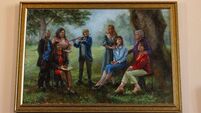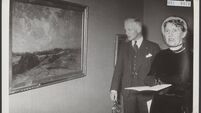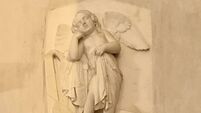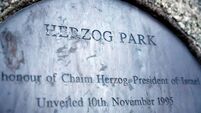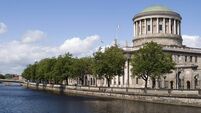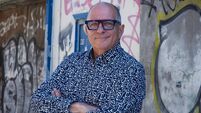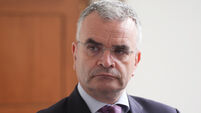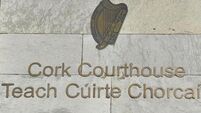Michael Collins hid from Black and Tans among Dublin's Jews

The tale of Michael Collins, a renowned independence hero, hiding among the Dublin congregation is a story that was highlighted after dedicated research.
New evidence of Michael Collins evading the Black and Tans by masquerading as an elderly Jewish man on his way to synagogue, and speaking "gibberish" has been unearthed by genealogist Stuart Rosenblatt.
Jews were for centuries the second-largest religious group in Ireland. Those who attended the Dublin Hebrew Congregation, then at Adelaide Road Synagogue passed down the tale orally and Rosenblatt first heard of it from the late Julie Lapedus, a participant. He has also heard ‘secondhand’ accounts, including one from the late Sybil Fishman, whose father was also a witness. Had they not sheltered Collins, who knows what would have happened to Irish independence as we know it?
Rosenblatt said: “The Easter rising coincided with Passover celebrations and many Jewish families drew parallels between the Hebrew fight for freedom; Moses taking us from Egypt and the Irish independence struggle.”
Curfews and raids were "the norm" in 1920, he said, and rewards had been offered for the apprehension of the Dáil members.
HISTORY HUB
If you are interested in this article then no doubt you will enjoy exploring the various history collections and content in our history hub. Check it out HERE and happy reading
"The longer these ‘rebels’ stayed ‘at large’, the more the British felt their authority was waning, thus the more desperate their methods became to cling onto Ireland. The constant searches and interrogations by the Black and Tans created a vicious cycle. The story of Collins hiding among Jews was not very well-known outside the community.”
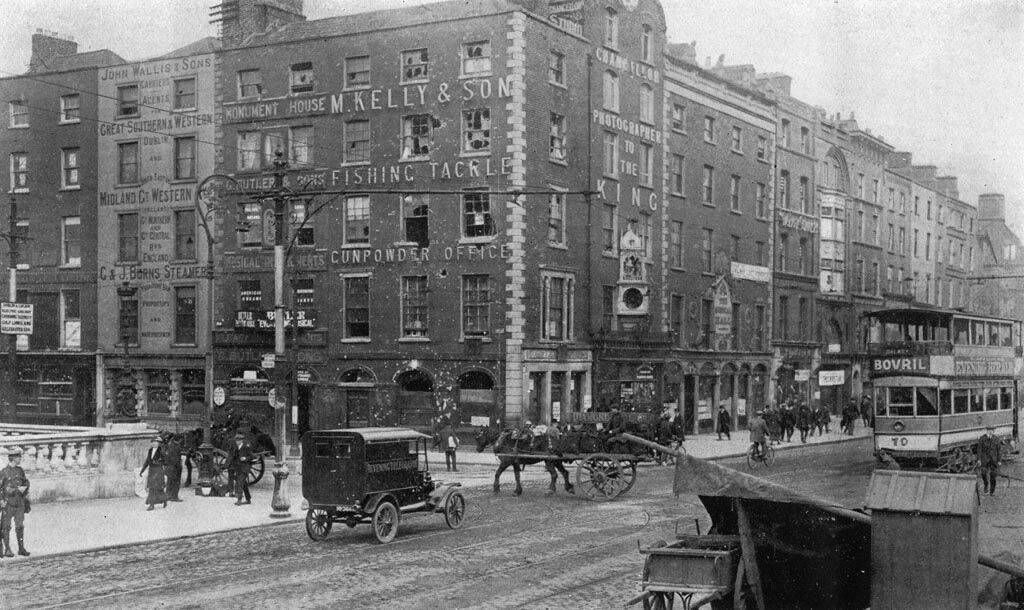
Dublin in the 1920s had a sizeable Jewish population of over 3000. The bulk of the modern community hailed from Eastern Europe; mostly from Lithuania and the Russian Empire in the late 1800s fleeing persecution in the European mainland. Eventually, they settled in an enclave dubbed 'Little Jerusalem'. Yiddish, a European Jewish language even became the third most spoken language in Ireland at the time, after English and Irish.
One fateful Friday afternoon in 1920, the Tans descended on Longwood Avenue. The area between Leonard’s and Kelly’s corner was blocked off by either an armoured car or lorry and then the searches commenced. They swept every house and took some away for questioning.
However, on this Shabbat day, the Jewish community made its decision:“Tans or no Tans, we are going to synagogue”.
Reverend Gudansky, minister of the Dublin Hebrew congregation, had assured the community that the service would take place no matter what befell, and a consensus was reached among the members that they would stick with the Reverend’s firm decision. So, as it was time to go pray, the men in the family first emerged, dressed in black suits, wide-brimmed hats, and bearded in all shapes and sizes. Then came the women and children. The Reverend was the last to appear, accompanied by his family and supporting an older gentleman who could barely walk but was determined to go nevertheless. Nobody intended to miss service that Friday.
As they approached the checkpoint, the bewildered Tans questioned them; how could so many people be so bold to defy such a strictly-enforced curfew at such risk? The crowd was mumbling in haste and eventually became very agitated.
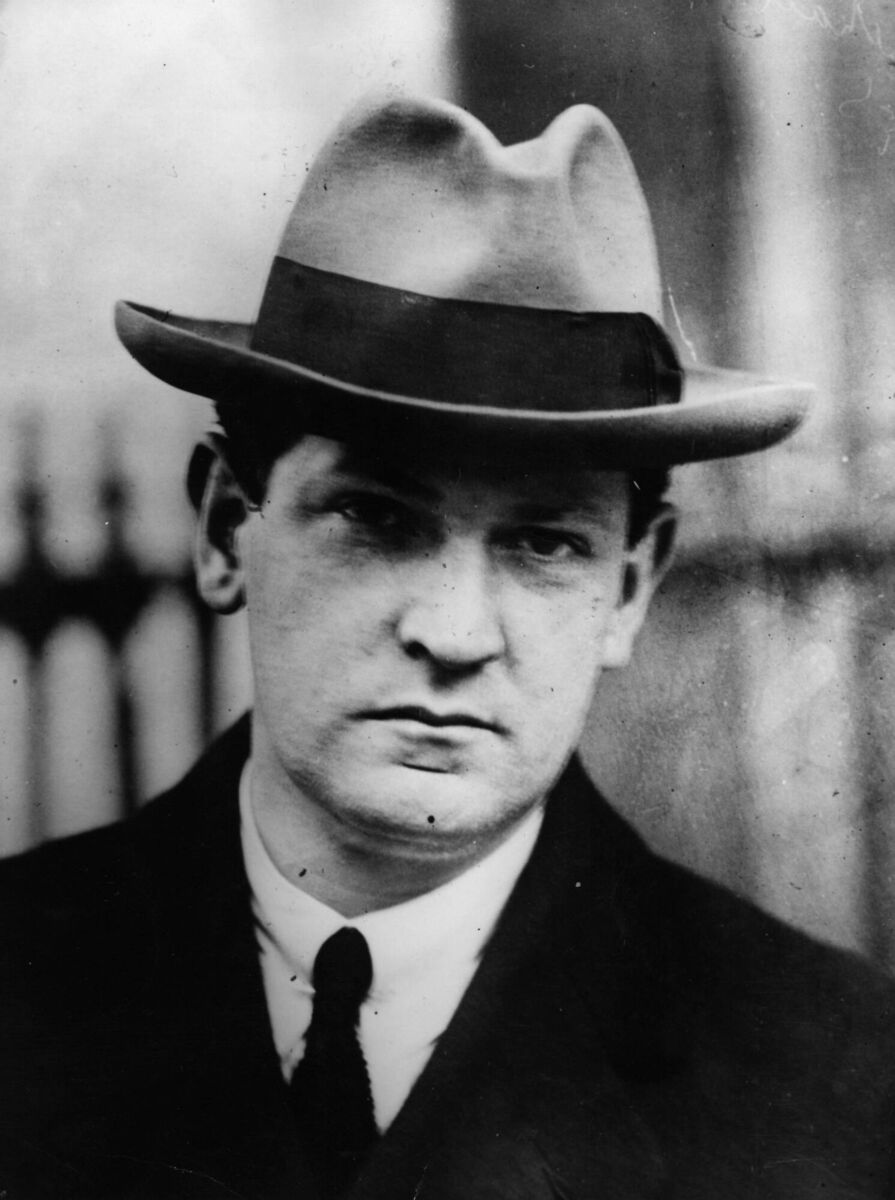
It seemed that somewhere along Longwood Avenue, Dublin’s Jewish community had somehow lost the ability to speak English.
Soldiers were bombarded with Yiddish, Russian, Lithuanian, and Polish, leading to more confusion. The Black and Tans, in an effort to rid themselves of the crowd, stepped aside and allowed them to go worship.
As they reached Walworth Road, Reverend Gudansky and his aged companion stopped and shook hands. The man removed his hat and boomed: “Thank you! Thank you!” to the crowd in a Cork accent. He was none other than Michael Collins in disguise. He winked and said: “I will send for the bicycle later” and darted away to his next hideout.
A note from Quentin Crivon to Rosenblatt adds a wonderful addendum to this story: Michael Collins first went into Crivon’s grandfather, Joseph Kervon’s house, on Longwood Avenue and jumped over the wall into Reverend Gudansky’s back garden next door, because it was a safer pathway to enter unnoticed. And the rest is history. It seems most likely that he had borrowed his clever disguise - the traditional Jewish garb from the Reverend’s house.
Rosenblatt has written about this incident in his book, .
The tale of Michael Collins, a renowned independence hero hiding among the Dublin congregation is a story that was highlighted after dedicated research. Rosenblatt said: “Who knows what else we may uncover in time”.
As a genealogist, he has documented over 70,000 names of Irish Jewish community members following much intensive work and unraveled more interesting bits of history such as this.
Stuart Rosenblatt is seeking further information about Irish Jewish history or genealogy. See www.irishjewishroots.com or email srosenblatt@irishjewishroots.com.



